The Truckers' Convoy in Canada highlighted disparities in law enforcement responses, exposing systemic biases and injustices. This event has prompted calls for urgent reforms in policing practices to address issues of systemic racism and unequal treatment. The contrast in how the convoy protesters, mostly white, were handled compared to Indigenous movements underscores the existence of privilege and favoritism within law enforcement. Lessons drawn from this policing scenario emphasize the necessity for a fairer and more accountable system. Further insights can be gained by exploring the repercussions of these disparities and the ongoing efforts to reform law enforcement practices.
Key Takeaways
- Ottawa Police Service's leniency towards truckers' convoy highlighted disparities.
- Systemic racism influenced law enforcement's handling of the convoy.
- Contrasting treatment of convoy protesters and marginalized groups exposed biases.
- Urgent need for reforms to address structural racism in policing.
- Truckers' convoy revealed disparities in policing responses and favoritism towards certain groups.
Truckers' Convoy Impact on Policing
The impact of the truckers' convoy on policing in Canada revealed significant deficiencies in the Ottawa Police Service's response to the protest. In contrast to the handling of Indigenous protesters, the police response to the convoy highlighted disparities in law enforcement practices.
The Ottawa Police Service faced criticism for their mishandling of the 2022 trucker protest, shedding light on their unpreparedness and lack of planning. Interim Police Chief Steve Bell's admission of these shortcomings further emphasized the inadequacies in their approach. The security intelligence report from OPS, which viewed the convoy protesters positively, contributed to a complacent attitude towards the situation, underscoring a concerning lack of preparedness.
Additionally, leaked information from police officers to the protesters raised doubts about the relationship between law enforcement and the convoy participants, raising questions about the impartiality and professionalism of the police response. The contrasting treatment of the truckers' convoy compared to Indigenous movements highlighted biases and unequal policing practices within Canada.
Disparities in Law Enforcement Response
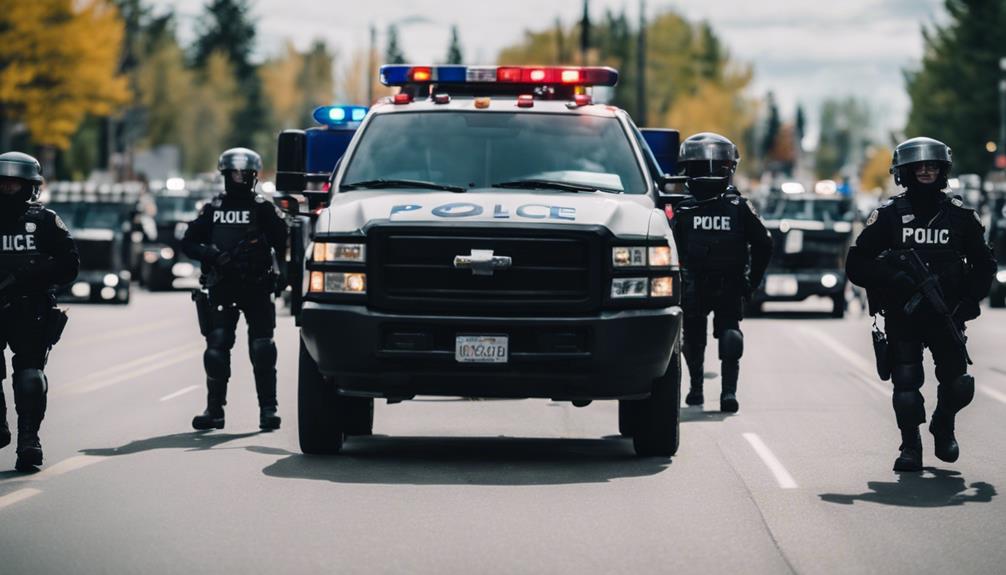
Disparities in law enforcement response to the truckers' convoy and other protest movements in Canada reveal underlying biases and unequal treatment within the system. The differential treatment by police during the convoy highlights deep-rooted issues:
- Selective Enforcement: The truckers' convoy experienced leniency from law enforcement, allowing weeks of occupation without intervention, while Indigenous and Black groups organizing similar protests would likely face immediate and forceful responses.
- Support Discrepancy: White protesters in the convoy were shown support by some police officers, even to the extent of physical gestures like hugging, demonstrating favoritism based on race.
- Structural Racism: The ample warnings and notices of potential arrest given to white settlers during the convoy exemplify how structural racism influences law enforcement practices, leading to disparities in treatment based on race.
These disparities underscore the presence of systemic biases within the police force and the need for reforms to address structural racism in law enforcement practices.
Systemic Racism in Police Actions

Revealing entrenched biases, policing actions in Canada underscore systemic racism in law enforcement responses. The differential treatment of white settlers compared to Indigenous and Black protesters during the truckers' convoy protests exemplified how systemic racism permeates police actions. Structural racism was apparent as white protesters received preferential treatment and backing from law enforcement, while racialized groups faced the looming threat of militarized force for engaging in similar protests. This disparity highlighted the inherent inequalities within the justice system, where privilege shields some from consequences while subjecting others to harsh repercussions. The failure to address police leniency towards the convoy protesters further exposed the lack of accountability within the system, perpetuating systemic injustices. Reports of racial profiling, discrimination, and the readiness of police to use force against Indigenous activists emphasized the pressing need to confront systemic issues and promote accountability in law enforcement.
| Systemic Racism in Police Actions |
|---|
| Policing actions highlight entrenched biases |
| Disparate treatment based on race is evident |
| Urgent need to address systemic issues |
Contrast in Police Treatment
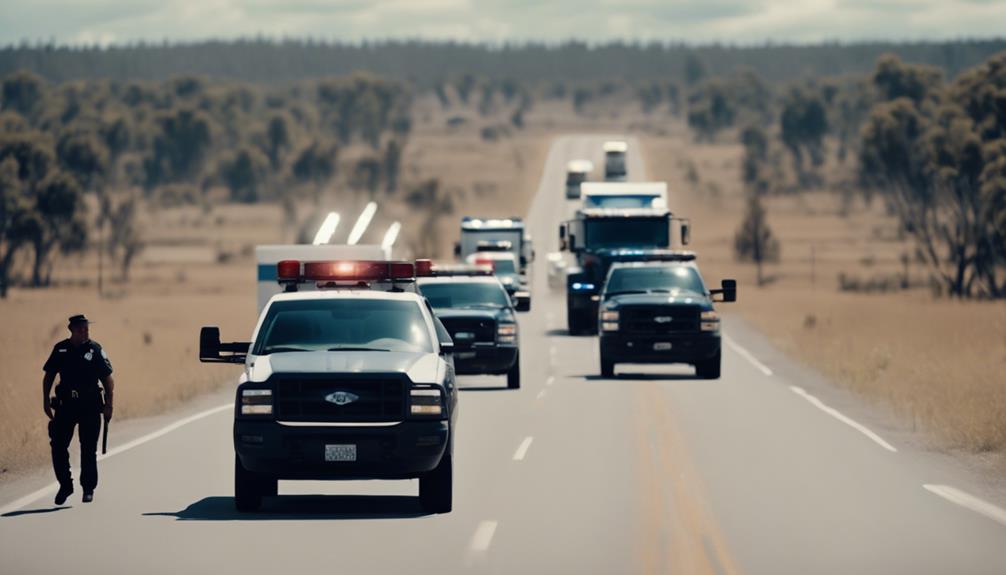
Highlighting the contrasting approaches of law enforcement, the treatment of white protesters in the truckers' convoy starkly differs from that of Indigenous and Black groups in Canada.
- White protesters in the truckers' convoy were allowed weeks of occupation without police enforcement, showcasing a leniency that's rarely extended to Indigenous and Black groups.
- Historical treatment suggests that Indigenous and Black groups would likely face militarized force if organizing similar protests, emphasizing the racial disparities in police response.
- Structural racism was evident in the benefits provided to white settlers during the convoy protests, such as ample warnings and notices of potential arrest, further underscoring the unequal treatment by law enforcement based on race.
These disparities in police treatment based on race emphasize the ongoing issues of racial bias and structural racism within Canadian law enforcement, highlighting the need for systemic change to guarantee equitable treatment for all citizens.
Privilege and Law Enforcement
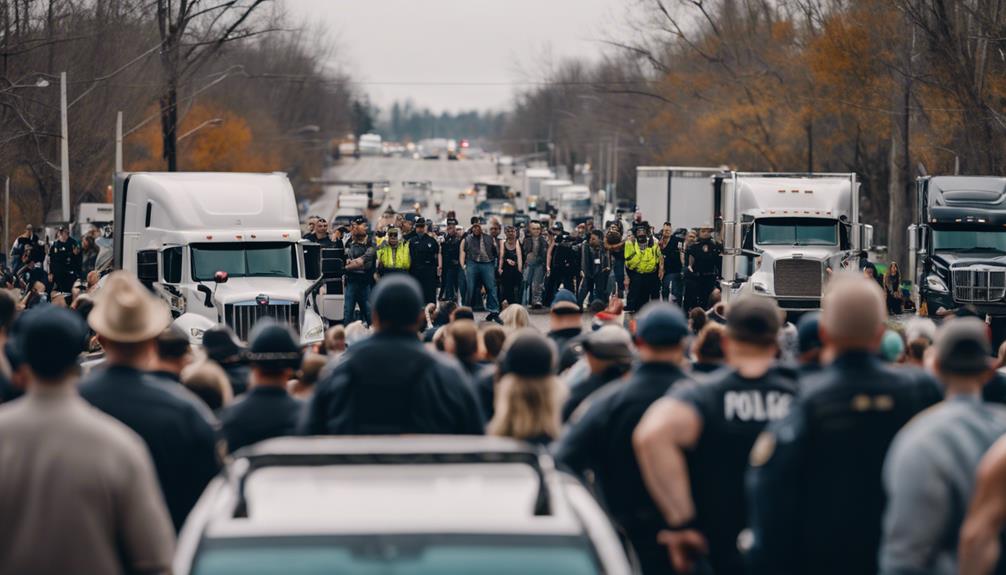
The extreme privilege afforded to white settlers during the Freedom Convoy protests is evident in the lenient treatment they received from law enforcement, including weeks of no enforcement. This preferential treatment exposes the underlying issue of white supremacy and structural racism within law enforcement in Canada. White protesters benefited from warnings and notices of potential arrest, a luxury not extended to Indigenous and Black groups. The stark contrast in policing approaches between white settlers and marginalized communities highlights the systemic inequalities ingrained in law enforcement practices.
In a society where white individuals are granted leniency and warnings while minorities face immediate and often militarized responses, the disparities in how law enforcement handles different groups are clear manifestations of structural racism. The Freedom Convoy protests underscore the need for a critical evaluation of privilege within law enforcement agencies and the urgent necessity for reforms to address these deeply rooted inequalities.
Need for Police Accountability
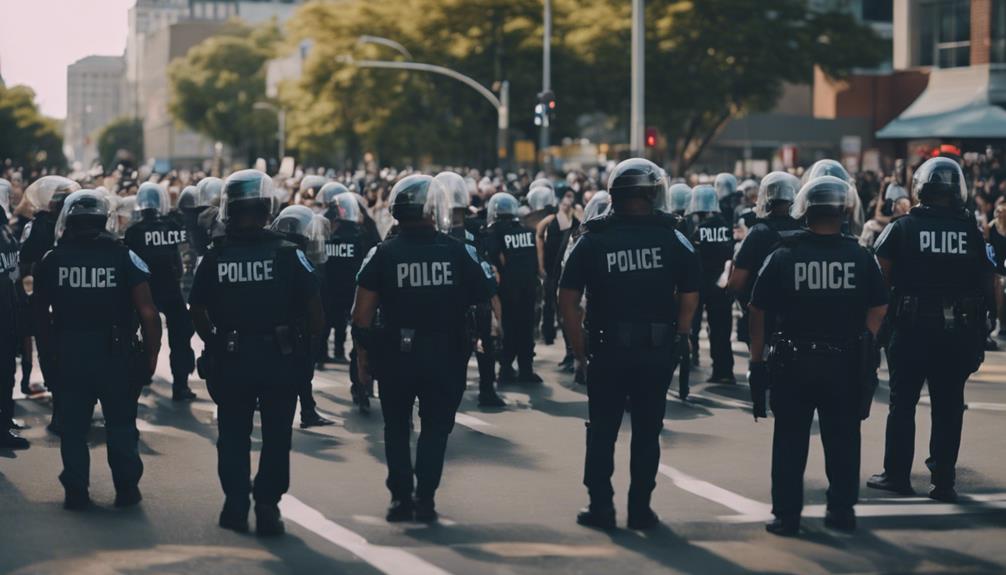
The failures of policing during the truckers' convoy protest have underscored the immediate need for enhanced police accountability measures. The lack of response and even support from some officers has raised concerns about the effectiveness of current accountability systems. To address these issues, there are several key points to take into account:
- Implementing transparent mechanisms for reporting and investigating police misconduct.
- Strengthening oversight bodies to guarantee independent review of police actions.
- Enhancing community engagement to build trust and foster collaboration between law enforcement and the public.
The recent events surrounding the truckers' convoy have shed light on systemic issues within policing, emphasizing the critical importance of holding law enforcement accountable. Calls for redirecting police funding to social services highlight the need for thorough reform to address these issues effectively. It's clear that without robust accountability measures in place, restoring public confidence in law enforcement will remain a significant challenge.
Structural Racism in Canada

Amidst the response to the truckers' convoy, structural racism in Canada starkly manifests through disparate treatment based on race. The leniency shown towards white protesters, with a lack of enforcement by police for weeks during the convoy occupation, highlights extreme privilege for white settlers in Canada. This preferential treatment stems from systemic issues deeply ingrained within law enforcement, illustrating the presence of structural racism.
White protesters often receive benefits such as ample warnings and notices of potential arrest, a stark contrast to the historical and expected treatment of Indigenous and Black groups. The disparities in police response based on race become evident when considering how Indigenous and Black groups would likely face militarized force if they organized similar protests. The over-policing of Indigenous and Black protesters compared to white protesters underscores the pervasive nature of structural racism within law enforcement in Canada.
White Protesters Vs. Racialized Groups
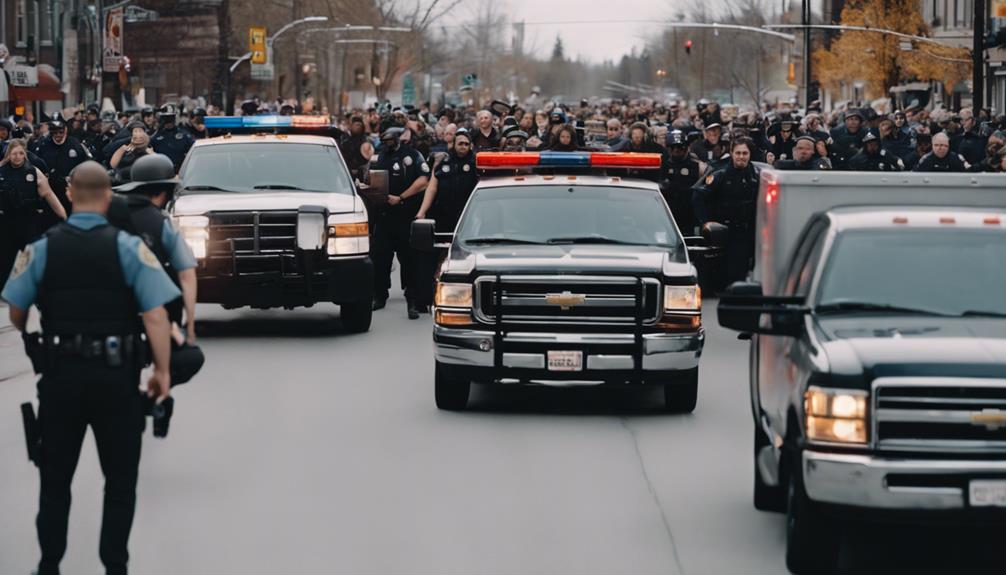
White protesters at the truckers' convoy received preferential treatment from law enforcement, showcasing racial bias in policing. This double standard was evident in the leniency shown towards white demonstrators, contrasted with the historical and likely militarized response faced by Indigenous and Black groups.
The systemic racism exposed in this disparity highlights the need for equitable treatment and accountability in law enforcement practices.
Racial Bias in Policing
During the truckers' convoy protests in Canada, law enforcement's disparate treatment of white protesters and racialized groups exposed deep-rooted racial bias in policing. This contrast in police bias was evident through the leniency granted to white protesters, while racialized groups faced historical treatment characterized by militarized force and over-policing. The systemic racism ingrained in law enforcement became glaringly apparent as white settlers received ample warnings and notices of potential arrest, showcasing a stark double standard in how different communities are treated.
The following points highlight the racial bias in policing:
- White protesters in the truckers' convoy were afforded leniency by police, with little to no enforcement actions taken for weeks.
- Structural racism allowed white settlers to receive ample warnings and notices of potential arrest during the convoy protests.
- Indigenous and Black groups would likely face militarized force if organizing similar protests, based on historical treatment by police.
Double Standards Exposed
The stark contrast in law enforcement's treatment of white protesters versus racialized groups during the truckers' convoy protests underscores deep-seated disparities in policing practices. White settlers participating in the convoy experienced leniency from police, allowing weeks of occupation without enforcement. Visible displays of police support, such as hugging protesters, highlighted the structural privileges afforded to white demonstrators. This differential treatment exposes the impact of structural racism within law enforcement systems.
White protesters received ample warnings and notice of potential arrest, showcasing the stark disparities in how police respond to different groups. In contrast, it's evident that Indigenous and Black groups would likely face militarized force if engaging in similar protests, reflecting historical patterns of discriminatory police treatment. This over-policing of racialized protesters compared to white protesters serves as a clear example of the structural racism embedded in policing practices, emphasizing the need for systemic change and equity in law enforcement responses.
Systemic Racism Exposed
The contrasting treatment of different groups by law enforcement during the truckers' convoy protests sheds light on systemic racism within policing practices in Canada. This systemic issue is evident in the disparities observed between the handling of white settlers participating in the convoy and racialized groups such as Indigenous and Black communities. The disparities revealed underline the presence of structural racism within law enforcement, perpetuating unequal treatment based on race.
White settlers in the truckers' convoy received lenient treatment from police, including weeks of occupation without enforcement. Evidence of police support for the convoy, like hugging protesters, highlights structural racism benefiting white protesters. Indigenous and Black groups would likely face militarized force if organizing similar protests, based on historical police treatment.
These instances of over-policing of racialized groups compared to white protesters underscore the systemic privilege and disparities that exist in how different racial groups are treated by law enforcement in Canada.
Militarized Reactions to Protests
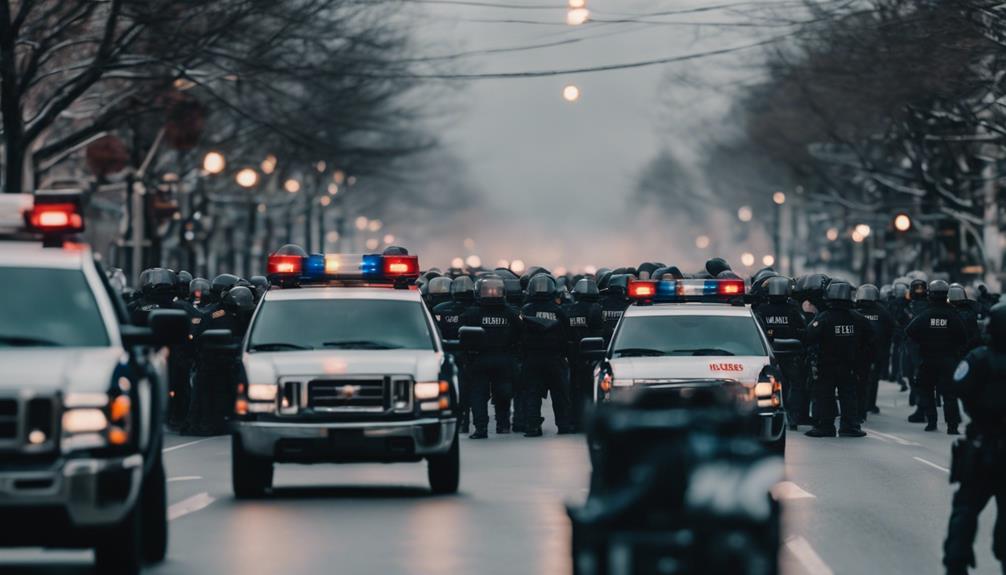
Why do militarized reactions to protests raise concerns in Canada?
Militarized reactions involve the deployment of military personnel or tactics in response to civilian demonstrations. The involvement of military personnel and police officers in the truckers' convoy protests has sparked worries about the escalation of tensions and potential human rights violations.
The presence of elite anti-terrorism military unit members and a Canadian army colonel in the convoy protests has raised questions about the appropriateness of such responses to civil unrest. Additionally, the risk of extremist infiltration in law enforcement and military institutions adds another layer of concern. White supremacist groups actively recruit individuals with military training, leading to fears of xenophobic and anti-government extremist groups gaining influence in these institutions.
This underscores the importance of addressing the potential for extremist ideologies to permeate security forces and the need for robust vetting processes to prevent such infiltration.
Addressing Police Biases

Police biases, particularly evident during the truckers' convoy, underscore the need for thorough training for officers to address implicit prejudices.
Improving community relations and fostering trust between law enforcement and marginalized groups are vital steps in combating systemic biases.
Addressing these issues head-on is essential in promoting fairness and equity within policing practices.
Bias in Policing
Exposing underlying biases within law enforcement systems can lead to critical conversations about accountability and fairness. In the context of the truckers' convoy in Canada, bias in policing and structural racism became apparent through the preferential treatment of certain groups over others. This disparity in how law enforcement responded to the convoy compared to other demonstrations underscored the need to address biases within policing to uphold equitable treatment for all individuals.
- Structural racism played a significant role in the unequal treatment of the convoy protesters, highlighting systemic issues within law enforcement.
- The leniency shown towards mostly white protesters in the convoy raised concerns about the fairness and impartiality of policing practices.
- The disparities in police action during the convoy emphasized the need for greater accountability and oversight to prevent biases from influencing law enforcement decisions.
Training for Officers
The lack of thorough training programs addressing biases in law enforcement practices can perpetuate inequitable treatment and hinder community trust. In Canada, police training often falls short in adequately addressing biases and prejudices that may influence officers' interactions with the public. Incorporating education on recognizing and combating implicit biases is important to promote fair and equitable policing practices. Without proper training on biases, there's a risk of contributing to discriminatory behaviors and unfair treatment of marginalized communities by law enforcement.
Enhanced police training modules focusing on identifying and mitigating biases are essential for officers to navigate complex situations with sensitivity and impartiality. Addressing police biases through training is crucial for promoting trust, accountability, and respect between officers and the diverse populations they serve. By enhancing training programs to include a thorough understanding of implicit biases, law enforcement agencies can work towards fostering more inclusive and just interactions within their communities.
Community Relations
Working to foster trust and equity within communities, efforts are being made to address biases in law enforcement practices.
- Police departments are engaging in community dialogues to understand concerns and perspectives better.
- Training programs are being implemented to educate officers on unconscious biases and cultural competence.
- Accountability measures are being put in place to guarantee fair and impartial treatment of all community members.
Addressing systemic issues in community relations is crucial to rebuilding trust between law enforcement and marginalized groups. The disparities in how the truckers' convoy was handled compared to other protests have highlighted the need for police to examine and rectify biases within their practices. By actively working towards improving community relations and addressing biases, police departments can move towards creating a more equitable and just system for all individuals they serve.
Equitable Policing Solutions
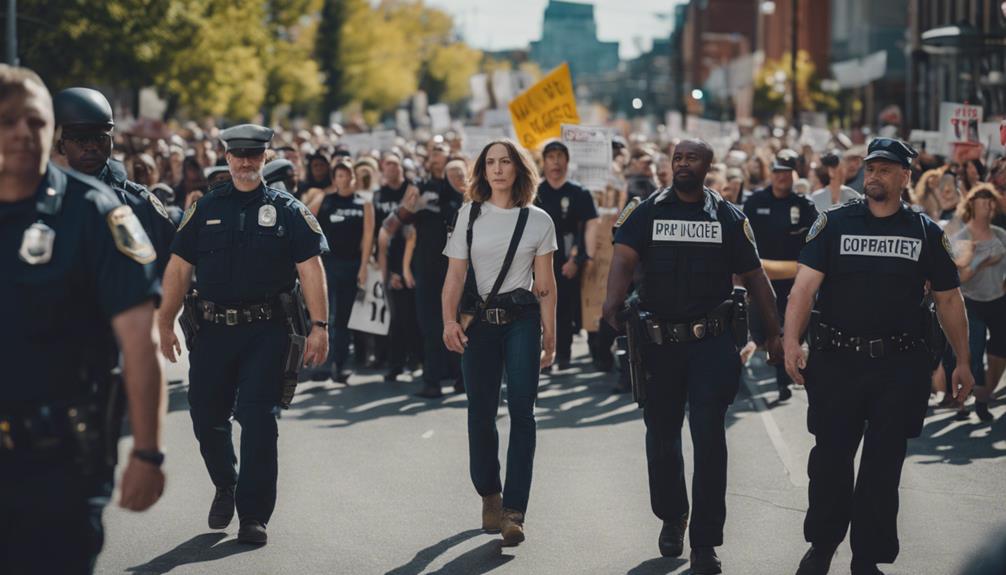
A critical need exists for implementing equitable policing solutions to address the glaring disparities in law enforcement response revealed during the truckers' convoy protests in Canada. The stark contrasts in how police treated white protesters compared to Indigenous and Black activists underscore the urgent call for police reform to combat systemic racism. The leniency shown towards white settlers during the convoy protests highlighted the structural racism embedded in law enforcement, exposing the need for fundamental changes in policing practices.
The support shown by some police officers towards the convoy, including hugging protesters, brought to light systemic issues that perpetuate unequal treatment based on race. The potential use of militarized force against Indigenous and Black groups if they were to organize similar protests further emphasizes the historical patterns of discrimination within law enforcement. The over-policing of marginalized protesters compared to white settlers exemplifies the need for equitable policing solutions that prioritize fairness and equal treatment for all individuals, regardless of race or background.
Lessons From Convoy Policing
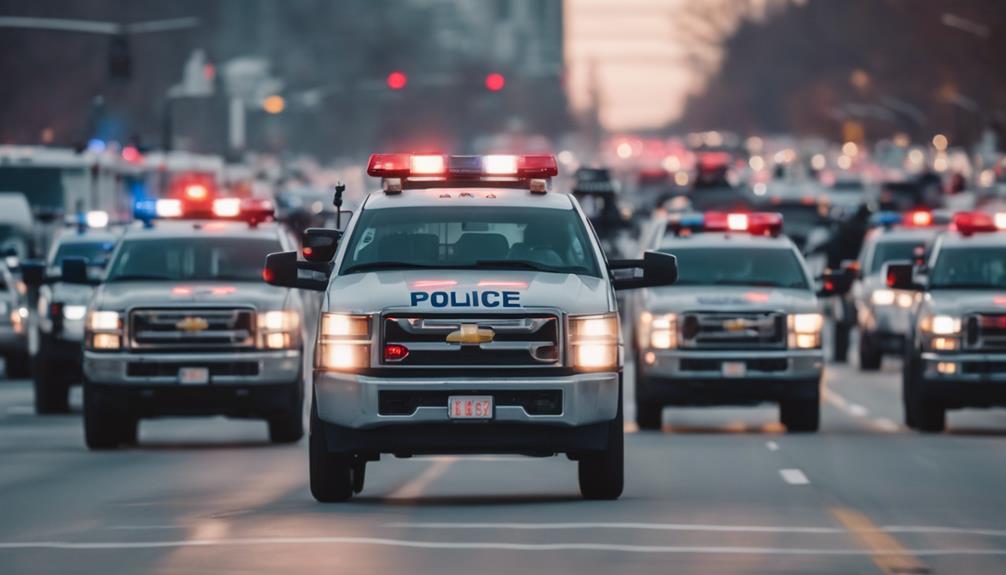
Amidst the aftermath of the truckers' convoy protests in Canada, valuable insights emerge regarding the handling of large-scale demonstrations by law enforcement authorities. The recent convoy policing provides essential lessons for improving future responses to such events.
- Police Oversight: The convoy incident revealed a pressing need for enhanced police oversight mechanisms. The prolonged inaction of the Ottawa Police Service raised questions about their decision-making processes and highlighted gaps in monitoring and accountability.
- Accountability: The convoy also underscored the importance of holding law enforcement accountable for their actions. Criticisms of bias and double standards in the police response indicate a necessity for transparency and accountability measures to guarantee fair and equitable treatment of all demonstrators.
- Reform: The convoy's impact shed light on institutional and structural issues within Canadian policing. This emphasizes the urgency for thorough reform efforts aimed at addressing systemic biases, enhancing community relations, and fostering trust between law enforcement agencies and the public.
Repercussions of Unequal Treatment

The disparate treatment of different groups during the truckers' convoy protests in Canada starkly exposed systemic inequalities within law enforcement practices. White settlers in the convoy experienced leniency from the police, with weeks of occupation going unchallenged, while Indigenous and Black groups faced the looming threat of militarized force based on historical biases. This unequal treatment highlighted the systemic racism prevalent in law enforcement, showcasing a stark contrast in the freedom to protest.
To illustrate this point further, let's examine the repercussions of this unequal treatment in the table below:
| Groups | Treatment Received |
|---|---|
| White Settlers | Lenient – Weeks of occupation without enforcement |
| Indigenous Peoples | Over-policing and threat of militarized force |
| Black Groups | Over-policing and threat of militarized force |
The freedom to protest without fear of disproportionate policing measures should be a right extended to all individuals, regardless of their background. The differential treatment witnessed during the convoy protests underscores the urgent need for addressing systemic inequalities within law enforcement practices.
Reforming Law Enforcement Practices
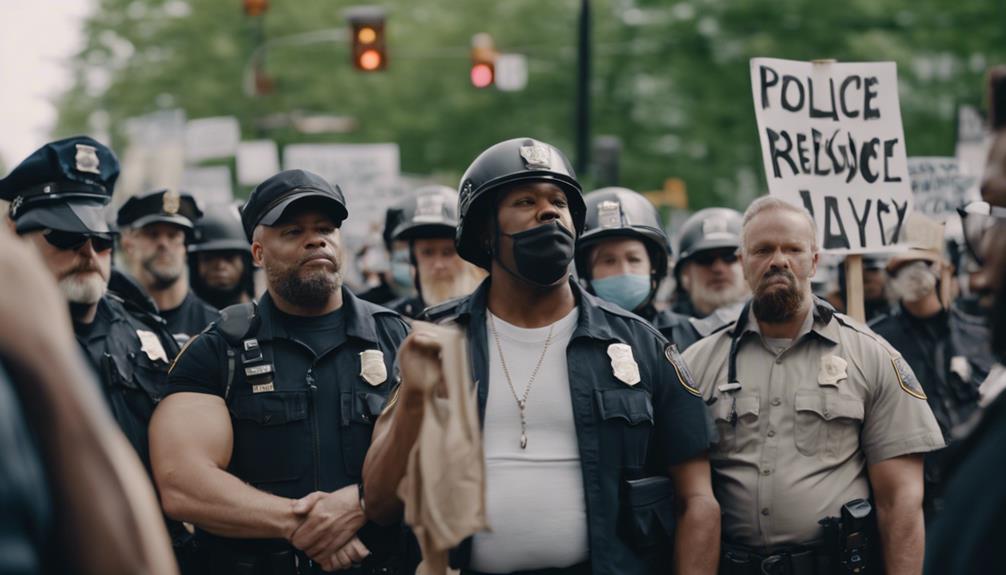
Calls for reforming law enforcement practices have intensified in response to the systemic racism exposed during the truckers' convoy protests in Canada. The revelations have sparked discussions on how to address these issues effectively.
- Redirecting police funding to social services for crisis-affected individuals has gained traction as a potential solution. This approach aims to address the root causes of issues that law enforcement often deals with.
- Former Ottawa police chief's acknowledgment of systemic racism within the Ottawa Police Service has further fueled the need for reform. This recognition highlights the importance of confronting and dismantling discriminatory practices within law enforcement agencies.
- The withdrawal of support by Ottawa's hardline police union for the police chief due to reform efforts underscores the challenges faced in implementing changes. Resistance from within police departments may hinder progress towards creating more equitable and just policing practices.
These developments underscore the urgency of addressing systemic issues within law enforcement and working towards creating a fairer and more accountable system.
Creating a Fairer Policing System
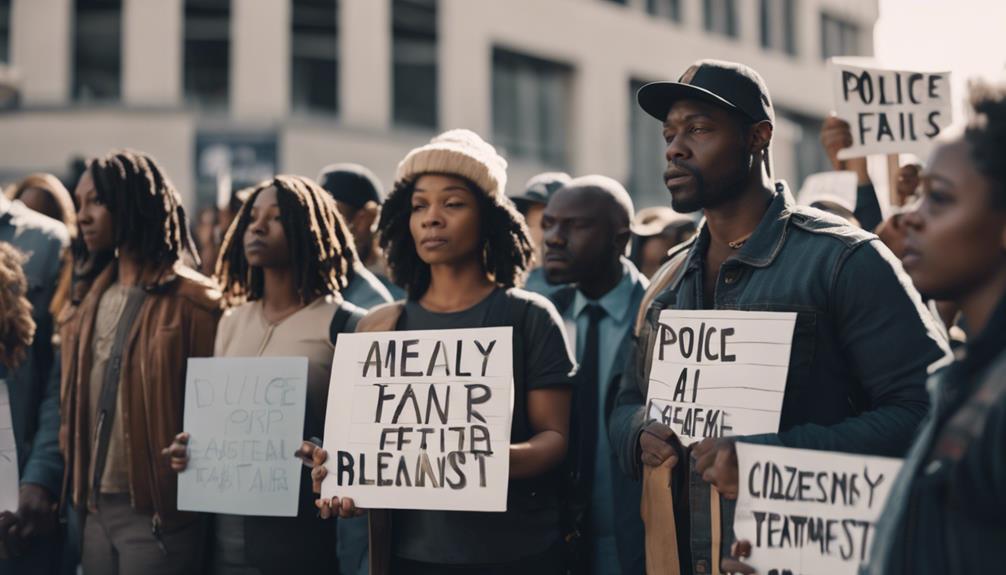
The disparities in how law enforcement handles protests based on race and privilege, as highlighted by the truckers' convoy incident, underscore the urgent need for a fairer policing system in Canada.
Addressing systemic racism and white supremacy within law enforcement is vital to building community trust and ensuring equitable law enforcement practices.
Efforts towards police reform must prioritize accountability and transparency to rectify historical and ongoing inequalities that perpetuate unjust treatment towards marginalized communities.
Equitable Law Enforcement
Highlighting disparities in law enforcement, the truckers' convoy has underscored the urgent need for a fairer policing system in Canada. The events surrounding the convoy shed light on systemic biases and structural racism within law enforcement, particularly evident in the differential treatment received by diverse groups involved:
- Unequal Treatment Based on Race and Privilege: White protesters experienced leniency, with reports of police support and lack of enforcement, highlighting systemic biases in policing practices.
- Likely Militarized Response for Indigenous and Black Groups: The convoy's contrasted treatment suggests that if Indigenous or Black communities organized similar protests, they'd likely face a militarized police response, exposing underlying structural racism.
- Need for Accountability and Addressing Systemic Issues: The response to the convoy emphasized the necessity of holding law enforcement accountable and addressing systemic issues to foster equitable law enforcement practices in the future.
These disparities emphasize the critical need for a more equitable and just policing system in Canada.
Community Trust Building
Residents in the community are actively seeking ways to rebuild trust with law enforcement following the truckers' convoy events. The lack of community trust in the police, exacerbated by their mismanagement of the convoy protest, has led to calls for redirecting police funding towards social services to create a fairer policing system. During the convoy occupation, residents had to rely on each other for protection due to perceived police inaction, highlighting the urgent need for accountability, transparency, and effective measures to rebuild community trust.
| Community Trust Building | ||
|---|---|---|
| Challenges | Strategies | Impact |
| Police mismanagement | Enhancing community-police dialogues | Restoring faith in law enforcement |
| Lack of transparency | Implementing community oversight boards | Increasing accountability |
| Inadequate response to crises | Investing in community policing initiatives | Strengthening police-community relations |
Frequently Asked Questions
What Is the Convoy Controversy in Canada?
The convoy controversy in Canada centers around the Canadian truckers' protest in Ottawa against a vaccine mandate. Critics raised concerns about the Ottawa Police Service's initial lack of action in preventing the convoy from entering the city. This controversy led to the resignation of the former Ottawa police chief.
Subsequently, police intervened to disperse the convoy after weeks of occupation, prompting residents to protect each other due to perceived police inaction.
What Did Trudeau Say About Trucker Protesters?
Trudeau labeled the trucker protesters as a 'small fringe minority' and criticized their use of misinformation and intimidation tactics. He stressed the importance of upholding the rule of law and respecting democratic institutions during the demonstrations.
Trudeau highlighted the need to address underlying issues like misinformation and opposition to public health measures. Expressing concern about extremist elements in the protests, he called for unity and respect for Canadian values.
How Much Did It Cost to Policing the Ottawa Convoy?
Policing the Ottawa convoy cost an estimated $30 million, exceeding the entire annual budget of some small Canadian towns. The extensive police presence involved officers from various departments and regions.
This high cost raised concerns about resource allocation and budget priorities, emphasizing the strain large-scale protests place on city resources. The financial burden of policing the convoy highlights the significant impact such events have on municipal budgets and law enforcement resources.
What Is the Semi Truck Convoy About?
The semi-truck convoy in Canada was a protest against a vaccine mandate, particularly in Ottawa. It highlighted concerns about police response and accountability, with Indigenous and Black communities pointing out disparities.
The convoy's police support and leniency revealed systemic issues within law enforcement. It also showcased the presence of white supremacy and extremism in Canada.
The convoy was a symbol of civil unrest and societal divisions, sparking debates about policing and public safety.
Conclusion
To sum up, the truckers' convoy highlighted the disparities in policing in Canada, exposing systemic racism and privilege within law enforcement.
The contrast in police treatment during the convoy emphasized the need for reform in law enforcement practices to create a fairer and more just system.
It's essential to learn from these events and work towards ensuring equal treatment and accountability in policing to uphold justice for all.










